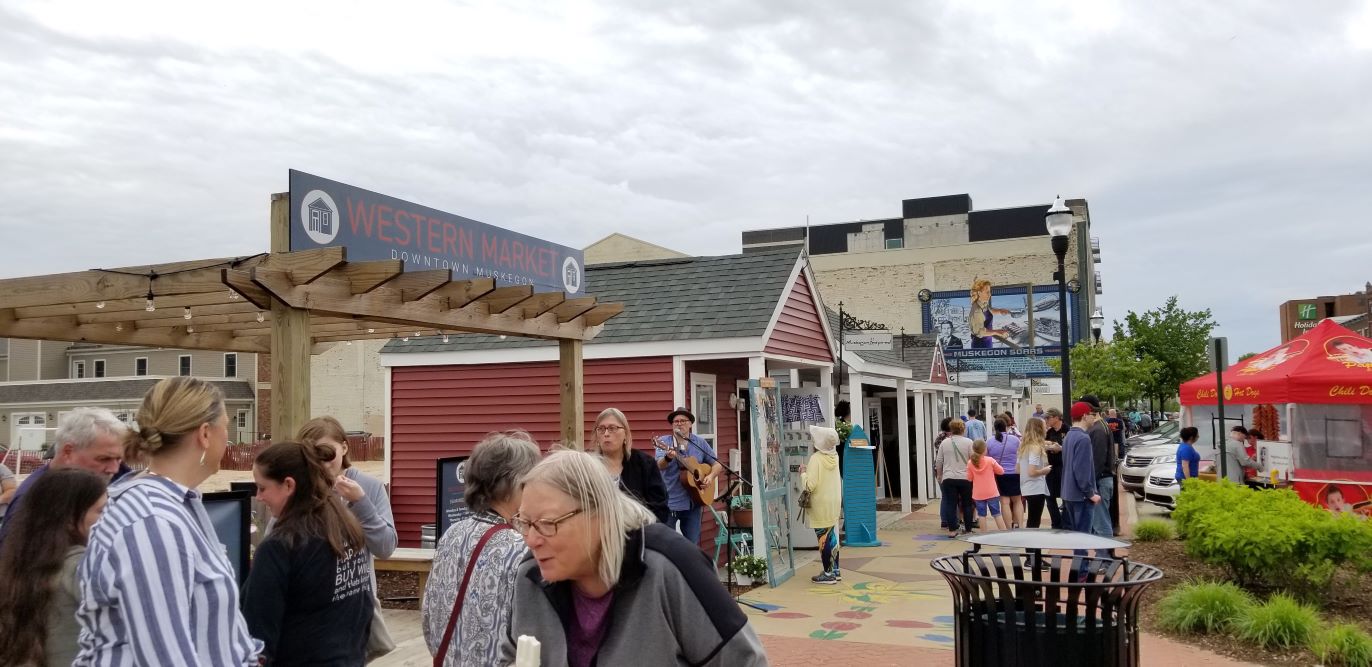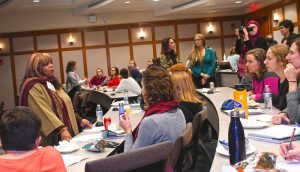As we evolve the Michigan Municipal League’s work into community wealth building, we’ve organized our approach into four focus areas, or “pillars.” These four pillars work together to support healthy and thriving communities, and can be found at various scales. From the League’s traditional position working at the municipal scale, we recognize that community wealth is about reaching everyone in a community – every home, every neighborhood, every person. In turn, our municipalities in combination add up to a more prosperous Michigan. This community wealth framework is not new, but refocused to both reflect the needs of the time and to inspire forward momentum in our communities and our state.
Over the coming months, we’ll be expanding on each of these pillars through our blog, podcasts, and webinars to show how our community wealth building work builds on the League’s past efforts, what our members are already doing in these areas, and where some of the needs exist

Muskegon’s Western Market offers starting retail businesses a low-cost space while filling a gap in downtown.
Economic and financial security is the first area we’ll be diving into. This work includes much of the League’s traditional focus around the fiscal health of municipalities and the role of place in supporting our state’s talent and economic development goals. We also look to the municipal role in supporting residents’ access to adequate housing, child care, health care, and employment, taking inspiration from tools like the United Way’s ALICE project.
The virtual and built environment pillar includes infrastructure ranging from water and sewer systems to roads and transit to the electrical grid and broadband coverage. Our decade-plus of placemaking work around the interaction of public space investment and private development also grows into this pillar.

Residents discuss ideas for Dwight Pete Mitchell Park during a PlacePlans project in Benton Harbor.
The pillar of environment and natural resources touches on placemaking through access to outdoor recreation and natural areas, but also considers our communities’ vulnerability to environmental impacts, such as extreme weather events, changing Great Lakes levels, brownfield contamination or PFAS in water supplies, air quality impacts on respiratory health, or agricultural disruptions. Here we examine how our communities can prepare for and adapt to changes in these systems, as well as how they can mitigate risk, such as by reducing carbon emissions or removing development from flood-prone areas.
The pillar of arts and cultural abundance recognizes that people’s distinct identities, and the deep connections they have to place and to one other, are intertwined with nearly every issue our communities address. Understanding and honoring our diversity of racial, ethnic, gender, and other identities, and the role that varied arts and cultural traditions play in reflecting these identities, allows communities to better serve their residents, whether by approaches to public safety, health, infrastructure investment, community engagement, or public art and festival policies.
Obviously, there are issues that span multiple pillars, and a few additional themes are a common foundation for all of these.
One of those common themes is the goal of building resiliency in community systems, or how well can a place weather change and disruption? This disruption can be cyclical changes of periodic recessions or the housing needs of aging residents. Or it can be more substantial change, like—as we’re experiencing now—a serious pandemic. And it can be non-linear and difficult to predict, like the precipitation changes of climate disruption. No matter which forms of change emerges, disruption will always be present. But how we design our systems to adapt and respond is what builds resiliency.

City Manager Sheryl Mitchell addresses Ford School students during a 16/50 Project forum on women in municipal leadership.
Another common theme is the explicit goal of advancing equity, within and across communities. At the community scale, that’s working to ensure our municipal finance system isn’t reinforcing economic disparities between places. Within communities, this could be as simple as asking who lacks access to safe and appropriate housing options, or to outdoor green space? Community wealth building requires us to examine how different communities, or parts of them, are affected by policies. As our friends at Strong Towns say, “No neighborhood can be exempt from change, and no neighborhood should experience sudden radical change.”
We present this overall structure for consideration by our cities and villages, not as something that is complete and perfected. Rather, it is a kit of parts that will be assembled slightly differently in each place—and a kit that requires the involvement of our members and partners to fully collect and assemble. We are declaring our intentions, while we work toward a better understanding of the needs. We look forward to hearing your feedback, we welcome new partnerships, and we can’t wait to see how this framework is implemented and improved upon locally.